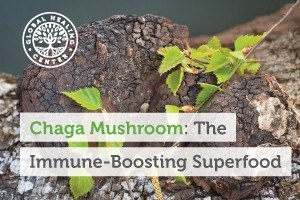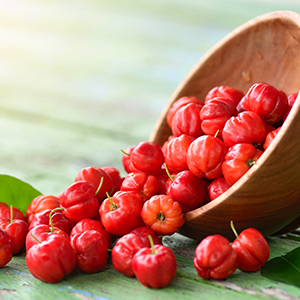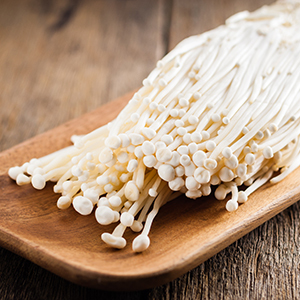
Chaga (Inonotus Obliquus) is a mushroom that typically grows on birch trees in colder climates across the Northern Hemisphere. At first glance, the mushroom doesn’t look very appealing; actually, it doesn’t even look like a mushroom at all! Appearances can be deceiving, however, as this special mushroom packs a punch when it comes to its health value.
What Is Chaga Mushroom?
Chaga has been consumed for centuries in the East, most typically as tea, where its health benefits are well established. More recently, chaga has been gaining popularity in the West, where its numerous health benefits are now being recognized by many health gurus. Technically, chaga is a highly-concentrated black mass of mycelium that protrudes from birch trees infected with parasitic — but non-toxic — fungus Inonotus Obliquus. The dark, hard and cracked exterior, which often appears like burnt charcoal, is called the sclerotium. The interior has a rusty yellow-brown color.
What Are the Benefits of Chaga Mushrooms?
The health benefits of Chaga are numerous, many of which can be attributed to its immune-boosting ingredients and antioxidants.[1] Let’s go through each of the top seven health benefits:
1. Supports Immune System
Chaga has an abundance of Beta-D-Glucans which help balance the response of the body’s immune system. This means that chaga helps boost the immune system when necessary, but slows it down when it’s overactive. This makes chaga a natural Biological Response Modifier (BRM). Chaga activates immune cells responsible for combating cancer initiation.[2] Research is still ongoing, as more studies are needed to determine chaga’s full role in cancer. However, chaga has proven effective in supporting standard cancer approaches, such as chemotherapy, by compensating for the program’s negative side effects. While chaga will not ease cancer progression, evidence suggests there may be vital compounds in the mushroom that warrant further investigation into its role.
2. Soothing Properties
Chaga supports the integrity of blood vessels and provides soothing properties in times of irritation. This can be helpful for those suffering from pain, neuropathy, and even diabetes.[3]
3. Ulcers and Gastritis
Due to its immune-boosting properties, chaga has long been used to support gastrointestinal health in Eastern culture. Most ulcers are caused by bacteria such as Helicobacter pylori, so a well-functioning immune system can fight off this pathogen. Ulcers may be soothed by the use of chaga, depending on the severity and the patient.
4. Normalize Blood Pressure and Cholesterol Levels
The betulinic acid found in chaga is able to break down LDL cholesterol — bad cholesterol — in the bloodstream.[4]
5. Antimicrobial Activity
The chemical characterization and biological activity of extracts of Chaga mushroom were examined and showed high antioxidant and antimicrobial activity.[5]
6. DNA Damage Protection
The DNA protection chaga mushrooms may provide is impressive. Cells pretreated with a chaga mushroom extract displayed less damage than cells that did not receive the extract.[6]
7. Antiviral Properties of Chaga Mushroom
Chaga mushroom showed protective support against harsh skin blemishes.[7, 8]
Chaga Mushroom Nutritional Breakdown
So what are the ingredients behind chaga that provide all these health benefits? Let’s go through the 6 key ingredients that make chaga so healthy.
1. Polysaccharides
Chaga contains structural polysaccharides within its chitin walls, which provide energy, cardiovascular health, intestinal and liver health, and promote healthy blood sugar levels. It’s also said to improve one’s mood.
2. Beta-D-Glucans
Beta-D-Glucans are known for their ability to modulate the immune system. Beta-D-Glucans also help with normalizing cholesterol levels and blood sugar.
3. Phytosterols
Of the phytosterols present in chaga, 45 percent is Lanosterol, 25 percent is Inotodiols and the remaining 30 percent consists of Ergosterol, Fecosterol, and several others. In vivo and in vitro testing shows a direct effect of both Lanosterol and Inotodiols on cancer cells, with lanosterol imparting a positive effect on viral compounds.[9]
4. Betulin and Betulinic Acid (Triterpenes)
Betulin and betulinic acid are powerful therapeutic agents that are currently being researched for their effects on supporting healthy cholesterol levels. In addition to their favorable benefits for maintaining a healthy cholesterol profile, betulin and betulinic acid are also being studied in relation to cancer and viruses.[10]
5. Antioxidants
Chaga sclerotium contains massive amounts of the natural black pigment known as melanin, which has high antioxidant levels due to the amount of polyphenols it contains. In fact, chaga has the highest ORAC score (the measure of antioxidant potency) of any superfood.
6. SODs
SODs are another important antioxidant present in chaga. SOD refers to a group of enzymes called Super Oxide Dismutase. These enzymes play an important role in protecting our body against the destructive effects of uncontrolled oxidation and free radicals. SOD potency is measured by the S-ORAC score.[11]
Chaga Mushroom vs. Superfoods
When it comes to health benefits, chaga performs very well when compared with several popular superfoods.
Quinoa vs. Chaga
Quinoa provides a great source of flavonoids, vitamins, and antioxidants. The high quantity of quercetin that it contains can help cardiac and respiratory health, in addition to protecting cells from free radical damage. Chaga contains a much higher level of antioxidants that provide the same benefits within the bloodstream.
Goji Berries vs. Chaga
Similar to chaga, goji berries contain high amounts of polysaccharides. Although unlike chaga, the main polysaccharide in goji berries is pectin. In contrast, chaga’s source of polysaccharides comes from chitin, a structural polysaccharide that is very beneficial for human consumption and much harder to source. The typical modern diet includes plenty of pectin and little to no chitin.
Avocado vs. Chaga
Avocado contains many beneficial nutrients such as folate and vitamin D. The combination of these nutrients plus lipids promotes lower cholesterol and heart health. The Beta-D-Glucans found within chaga also improve cholesterol levels by preventing cholesterol from being absorbed into the bloodstream during the digestion process.
Where to Find Chaga Mushroom
Chaga is not easy to find and people often mistake the mushroom for knots in the tree or burnt patches. You’ll find chaga growing predominantly on birch trees in cold habitats throughout the Northern Hemisphere, including northern parts of Europe, Russia, Korea, Canada, and the U.S. In North America, Chaga is almost exclusively found on birches in the northeast. In particular, it’s most commonly found on paper and yellow birch trees. Paper birch is a common forest tree with a white bark that exfoliates in broad, curling sheets. It’s found at low and high elevations in the northeast of North America. Yellow birch is another common forest tree and usually has a yellow bark that exfoliates as small, curling shreds. Most typically, well-developed chaga is found on birch trees older than 40 years and grows in all shapes and sizes on the outside of the birch trees it infects. You’ll typically see it in the form of a dome, cone, and horn with crusty ridges. To learn more about harvesting chaga, check out www.chagahq.com/harvest-chaga/.
How to Make Chaga Tea
The most popular way to consume chaga is by drinking a delicious cup of chaga tea. Below is my favorite simple chaga tea recipe for you to try at home.
- Break the whole chaga into roughly 10g chunks.
- Grind one chunk into powder using a blender or coffee grinder.
- Place one teaspoon (two if you like a stronger tea) into a tea infuser.
- Place the tea infuser into your favorite large mug and pour in about 400 ml of hot water.
- Leave the chaga and hot water steeping for at least 5 minutes, but the longer the better to extract more of the bioactive ingredients.
- Remove the infuser from the mug and add maple syrup or honey to taste.
References (11)
- Memorial Sloan Kettering Cancer Center. Chaga Mushroom. Fact Sheet.
- Youn MJ, Kim JK, Park SY, et al. Chaga mushroom (Inonotus obliquus) induces G0/G1 arrest and apoptosis in human hepatoma HepG2 cells. World J Gastroenterol. Jan 28 2008;14(4):511-517.
- Hyun KW, Jeong SC, Lee DH, Park JS, Lee JS. Isolation and characterization of a novel platelet aggregation inhibitory peptide from the medicinal mushroom, Inonotus obliquus. Peptides. Jun 2006;27(6):1173-1178.
- Sun JE, Ao ZH, Lu ZM, et al. Antihyperglycemic and antilipidperoxidative effects of dry matter of culture broth of Inonotus obliquus in submerged culture on normal and alloxan-diabetes mice. J Ethnopharmacol. Jun 19 2008;118(1):7-13.
- Glamočlija, Jasmina et al. "Chemical characterization and biological activity of Chaga (Inonotus obliquus), a medicinal “mushroom”." Journal of ethnopharmacology 162 (2015): 323-332.
- Park, Yoo Kyoung et al. "Chaga mushroom extract inhibits oxidative DNA damage in human lymphocytes as assessed by comet assay." Biofactors 21.1‐4 (2004): 109-112.
- Polkovnikova, MV et al. "[A study of the antiherpetic activity of the chaga mushroom (Inonotus obliquus) extracts in the Vero cells infected with the herpes simplex virus]." Voprosy virusologii 59.2 (2013): 45-48.
- Pan, Hong-hui et al. "Aqueous extract from a Chaga medicinal mushroom, Inonotus obliquus (higher basidiomyetes), prevents herpes simplex virus entry through inhibition of viral-induced membrane fusion." International journal of medicinal mushrooms 15.1 (2013).
- Lee SH, Hwang HS, Yun JW. Antitumor activity of water extract of a mushroom, Inonotus obliquus, against HT-29 human colon cancer cells. Phytother Res. Apr 15 2009.
- Zhong XH, Ren K, Lu SJ, Yang SY, Sun DZ. Progress of research on Inonotus obliquus. Chin J Integr Med. Apr 2009;15(2):156-160.
- Youn MJ, Kim JK, Park SY, et al. Potential anticancer properties of the water extract of Inonotus [corrected] obliquus by induction of apoptosis in melanoma B16-F10 cells. J Ethnopharmacol.Jan 21 2009;121(2):221-228.
†Results may vary. Information and statements made are for education purposes and are not intended to replace the advice of your doctor. If you have a severe medical condition or health concern, see your physician.







